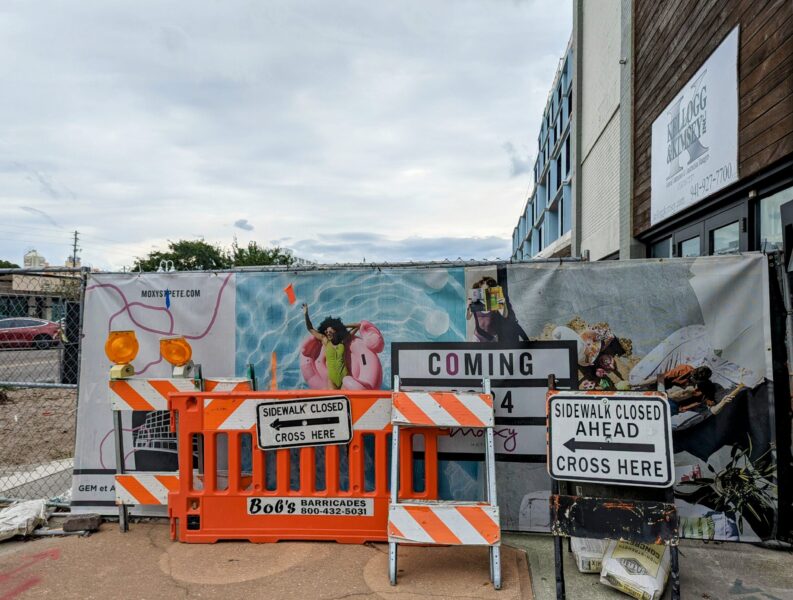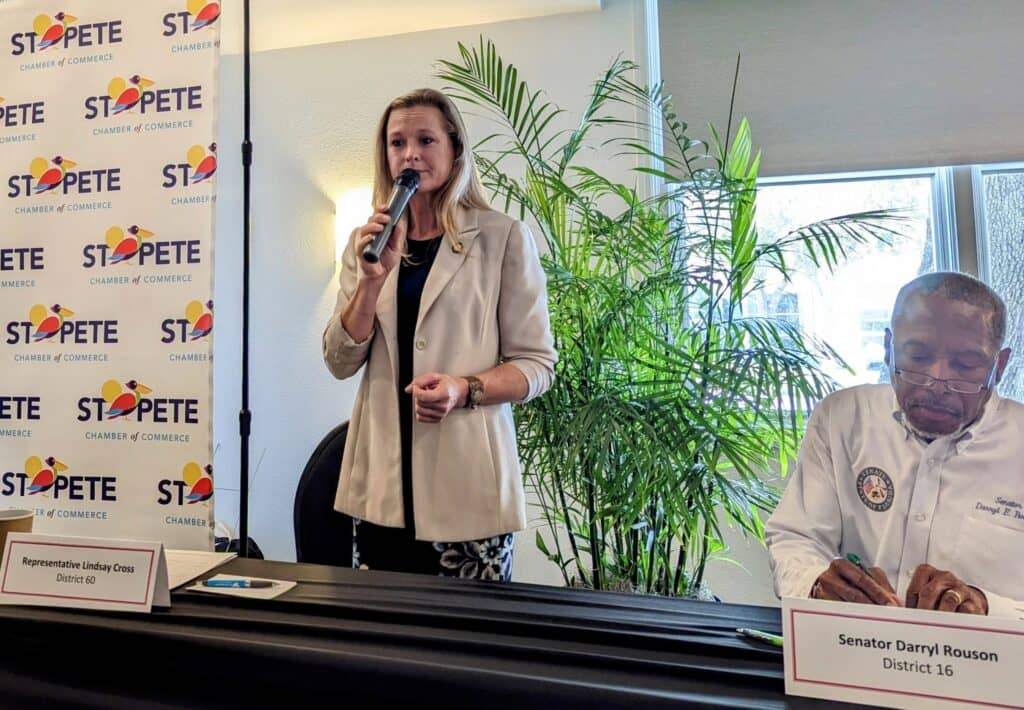Thrive
Storm-related legislation impacts local projects

While most new municipal ordinances and amendments promote growth to increase St. Petersburg’s housing stock, city officials must now ensure that any land-use changes are not more restrictive or burdensome to developers.
State lawmakers drafted Senate Bill 250, which became law July 1, to help areas in Southwest Florida recover from Hurricane Ian. Rep. Lindsay Cross told city councilmembers at a July 27 committee meeting that the legislation quickly expanded to affect any local governments within a 100-mile radius of Ian or Hurricane Nicole.
St. Petersburg escaped the brunt of Ian’s wrath in late September 2022 when it made landfall in Southwest Florida. Nicole struck the southeast coast last November before crossing the state as a weak tropical storm.
Immediately following a discussion on how the Live Local Act preempts local affordable housing initiatives, Council Chair Brandi Gabbard noted that city officials are again dealing with effects from last year’s hurricane season.
“St. Pete might have been spared from a lot of the damages of Hurricane Ian, and then, Senate Bill 250 came along,” Gabbard said. “And here we are. So, this is our lasting Hurricane Ian impacts.”
The legislation applies to any county or municipality located entirely or partially within 100 miles of Ian and Nicole’s landfall. It states that local governments “shall not propose or adopt more restrictive or burdensome amendments to their comprehensive plan or land development regulations” before Oct. 1, 2024.
Derek Kilborn, St. Pete’s planning and historic preservation manager, said that is open for interpretation. However, he believes the ongoing push to implement transit-oriented development (TOD) zoning around SunRunner stations would expand building opportunities rather than restrict growth.
“But we have to be very careful about each change that we’re proposing, to make sure that we will not be in violation of this language here,” Kilborn added.
The bill also allows residents whose houses suffered significant damage to live in temporary structures on their property. Kilborn explained that homeowners must show “a good faith effort” that they are rebuilding an unsafe “principal structure.”
In addition, the legislation extends and expedites the permitting process for 48 months following a disaster declaration. Its provisions are retroactive to Sept. 28, 2022.
Kilborn said his department would include analysis and findings regarding why a proposed change is not more restrictive or burdensome in staff reports until October 2024. SB 250 also allows for temporary fee reductions, and Kilborn said city officials could discuss amendments decreasing or waiving those costs.
Gabbard said the council must pause planned electric vehicle policy changes until the bill expires. City Attorney Michael Dema also noted that administrators are working to overhaul the city’s comprehensive plan with the ongoing Vision 2050 initiative.
“This will have a chilling effect on how much is appropriate to implement,” Dema said. “It’s going to require us to take a different lens to any proposed changes …”
Cross said she received SB 250’s legislative briefing on a Thursday evening during the spring session, and it was on the House floor that Monday. She proposed an amendment to reduce its radius to 50 miles after she realized it would include St. Pete and nearly two-thirds of the state.
Cross said the city lacked direct storm impacts and that the bill would unnecessarily “handcuff” local leaders. While her colleagues understood that rationale, Cross said the amendment “was deemed to be unfriendly.”

State Rep. Lindsay Cross (left) and Sen. Darryl Rouson at a St. Petersburg Area Chamber of Commerce luncheon.
She said well-intended legislation involving state preemptions often expands and creates unintended consequences. “I think we’ll see what happens in the coming months with any hurricanes and storms that impact our state and whether they look at this as something to broaden,” Cross added.
Councilmember Gina Driscoll believes local leaders are in a fortuitous position as most recently passed initiatives support development. She said the council has approved “far more” allowances than restrictions.
Driscoll noted that homeowners can now build accessory dwelling units (ADUs) on about 80% of city lots, and officials have implemented mixed-use zoning around heavily trafficked corridors. She also said the TOD zoning initiative is progressing and expressed pride that the city government is adopting sensible changes.
“This (SB 250) might not be the greatest thing in the world, but it certainly has not been all doom and gloom for us,” Driscoll added. “We put some things in place that are actually moving in the right direction and are above what this is.”







